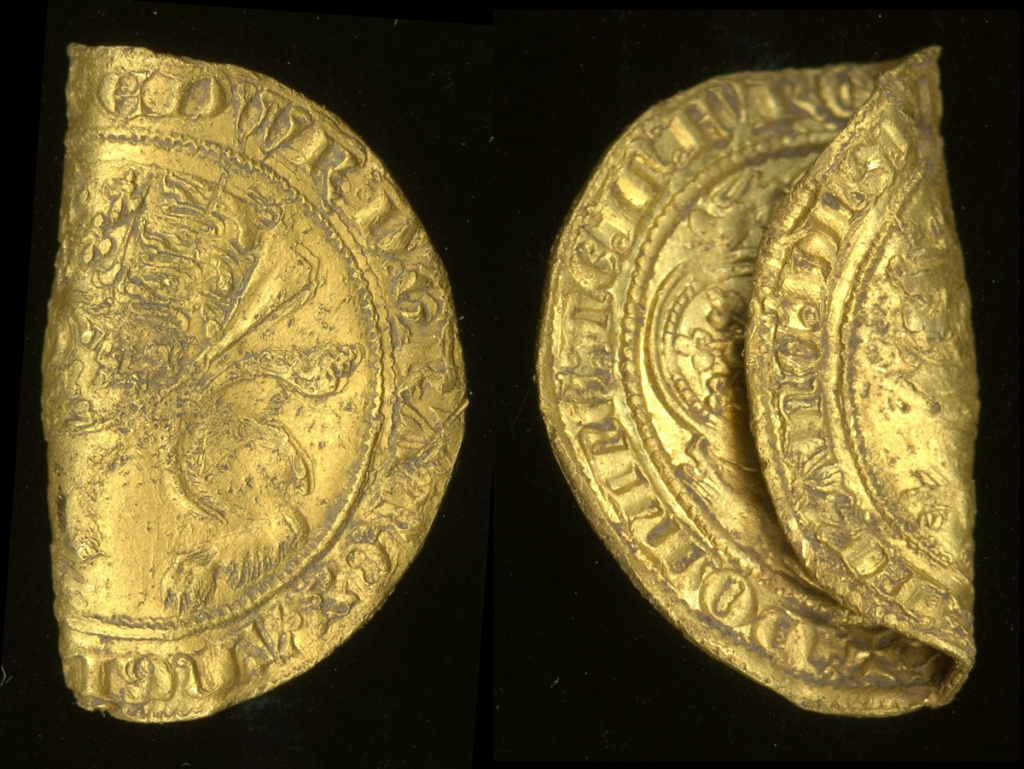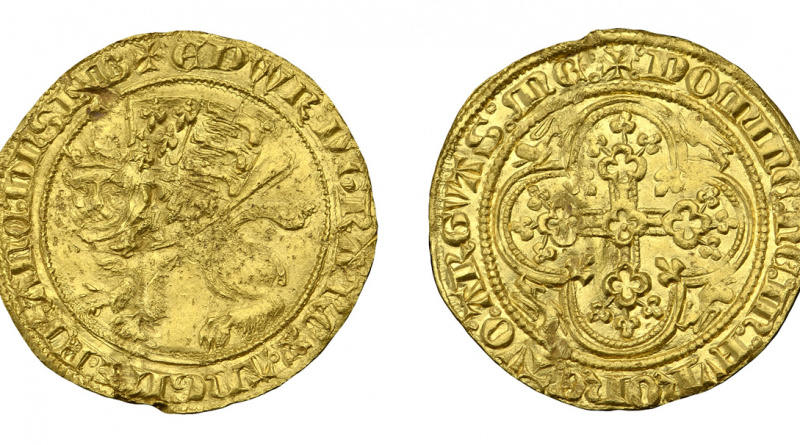DNW to sell gold “leopard” coin found in 2019 for over £100,000
DNW are selling this extremely rare and important Edward III gold “leopard” coin in their auction on 8/9 March. It is estimated to fetch £100,000 – £140,000. I suspect it will fetch much more than that upper estimate.
Like the Henry III gold penny sold by Spink recently (see World record price for Henry III gold penny found in 2021), the coins importance and rarity is due to it being a short lived and unpopular coin.
The find
The coin was found on 19 October 2019 at a rally in Reepham, North Norfolk and recorded at the PAS as NMS-30E3B9

When the coin was found it was doubled in half. Otherwise, it did not have much wear apart from some scuffing, probably as a result of agricultural activity. Now it has been straightened it looks very good.
An Edward III gold noble was found about 150 metres away from the leopard. It was considered that the two coins were deposited together and so both were treated as a potential treasure find. In June 2021 they were declared treasure and in November they were disclaimed. Between the issue of the leopard in 1344 and the noble in 1351, the country suffered from the Black Death.
Gold “leopard” coin
Unpopular coin
Between January 1344 and July 1344, Edward III minted gold worth £32,000 into three denominations; double-leopard (6 shillings), leopard (3 shillings) and helm or half-leopard. Edward wanted gold coinage to facilitate trade with Europe. However, these issues were not a success; the manufacturing cost was too high and the denominations were awkward; 6 shillings and 3 shillings don’t divide into the 20 shillings of a pound. Most importantly, they were overvalued in comparison to silver. They were recalled and replaced with the Noble, worth 6s 8d, which was a third of a pound.
Rarity
Due to the recall of these coins, the numbers surviving are tiny; only three double-leopards, five leopards and five helms. Nigel Miles, Consultant (Artefacts and Antiquities) at Dix Noonan Webb said “Only five are known to still exist and this is by far the finer of the two known specimens that have come to auction. The other three were all sold at auction before 1960 and two are now in the British Museum, and the third is at the Ashmolean Museum in Oxford“
Stayed in circulation longer than thought?
Not only is it rare but some believe that the nature of its find challenges current thinking as It suggests that some of these coins stayed in circulation longer than was previously thought. Dr Helen Geake, archaeologist and Norfolk finds liaison officer said “Almost none survived because they were all pulled back in and reminted, and this is the first time that we know of that one has been found with another coin. It implies that this leopard is either in circulation or being held onto by someone who thinks it is worth it, which is weird behaviour. This is the first leopard that comes from a hoard, so it now suggests that it’s possible some of these coins stayed in circulation. It means the picture is more complex than thought“
I’m not so sure. The leopards were demonetised in 1344 and it would have been strange to hold on to one after this. The noble wasn’t minted until at least 7 years later. I suspect that the leopard was lost soon after it was minted and the noble some years later – they were found about 164 metres apart after all.

